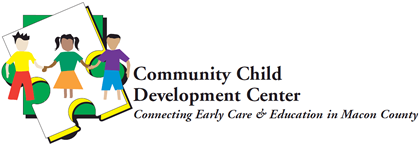Missouri State Approved Curriculum
Community Child Development Center, Inc. utilizes Creative Curriculum and the Emerging Language and Literacy Curriculum. Both are Missouri State Approved Curriculums. Because children learn from their daily interactions with the environment, a carefully organized and rich environment is the foundation for learning at CCDC. The curriculum focuses on the individual developmental progress of each child and offers an ideal setting for all ages, including children with disabilities.
The curriculum focus on the four major areas of development: social/emotional development, physical development, cognitive development, and language development. The curriculum uses creativity to enhance the child’s learning and provides a blueprint for children to thrive.
The heart of the curriculum is interest areas that promote learning in each area to support development. The interest areas include construction, science, art, dramatic play, writing, music/movement, sensory, math, outdoor, and reading, depending on the child's age.
Infants
Learn Through Nurturing and Responsive Caregiving
Our infant program is built upon trusting relationships with the important adults in their lives. Feeling loved and secure in their environments allows children to venture out and learn.
How We Achieve It
Our staff turns caregiving routines into care-teaching experiences. All infant experiences are based on the individual child's temperament, needs, and developmental level. The child-staff ratio is one adult for every four infants.
Toddlers
Learn Through Exploration
At this stage, everything a child sees, tastes, touches, smiles at, and hears builds a child's brain and leads to new abilities. Experiences in these early years become the building blocks for school readiness, language, literacy, math, and science.
How We Achieve It
Our staff provides an organized learning environment with many choices in a stimulating yet caring atmosphere. Toddlers learn as they are introduced to experiences, new friends, and materials. Experiences evolve as children use their senses to explore new concepts and develop their own ideas. The child-staff ratio is one adult for every four toddlers.
Tweens
Learn Through Discovery
Two year old’s and young three year old’s learn by being active and using their interests to construct learning. These busy learners need a safe environment with many chances to experience multiple learning experiences.
How We Achieve It
The safe classroom environment offers many and varied materials for children to use, reuse and explore. The staff creates opportunities for children to experience math, science, social, physical, and language activities, and materials while utilizing their natural curiosity. The child-staff ratio is one adult for every eight tweens.
Early Pre-K
Learn Through Experiences
Our Early Pre-K children are three by August 1st. This program prepares children for success in school and in life. Children at this special stage are learning all the time. The classroom interest centers are enhanced and expanded at this age for individual and age-appropriate interests and developmental objectives. The ELLC curriculum is hands on and active for this age group.
How We Achieve It
Emerging Language & Literacy Curriculum addresses each developmental area based on children's literature. Language and literacy-based activities, daily activities, and routines are incorporated throughout the learning centers geared towards this age group. The child-staff ratio is one adult for every ten 3-5-year-old children.
Pre-K
Learn Through Interacting
Our Pre-K program are children four by August 1. The ELLC curriculum components are both child and teacher directed. Concepts are integrated across all curriculum areas including language, science, math, physical and social development. Literacy becomes a major focus as children prepare to enter kindergarten.
How We Achieve It
Emerging Language & Literacy Curriculum addresses each developmental area based on children's literature. Language and literacy-based activities, daily activities, and routines are incorporated throughout the learning centers geared towards this age group. The child-staff ratio is one adult for every ten 3-5-year-old children.







